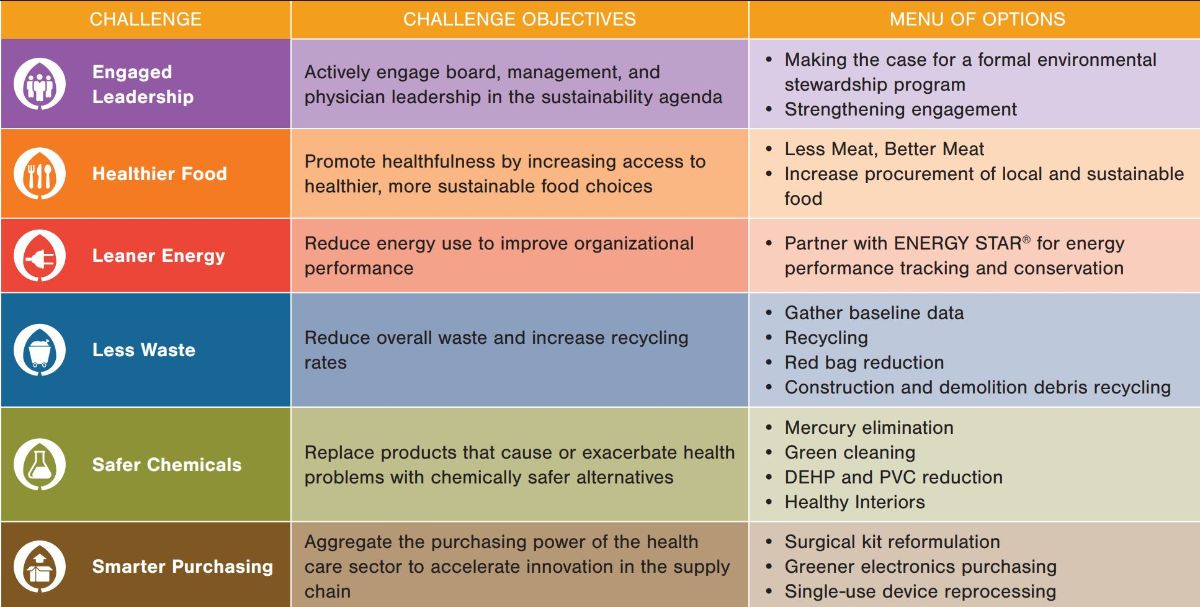|


Healthier Hospitals Initiative
A History of Advancing Sustainability in Healthcare
In 2012, when corporate and education projects were looking to become more sustainable through the various programs that were available at the time, twelve of the largest healthcare systems in the United States formed The Healthier Hospitals Initiative (HHI) along with the Center for Health Design, Health Care Without Harm and Practice Greenhealth. As the purpose of all healthcare is to restore patients to health, the healthiness of the environment is a vital part of the equation. With the original goal to transform healthcare so it reduces its environmental impact, six challenges of the Healthier Hospitals Initiative were created as a road map:

The three year initiative put sustainability practices into place to study data from nearly a thousand hospitals nationwide and develop best practices. Through this data and research, a framework to implement sustainability within the healthcare system were fine tuned. The Healthier Hospitals Initiative's lessons learned and "6 Challenge" structure continues on today embedded within the Practice Greenhealth Program.
What does this mean for us as designers and manufacturers? Many of the practices we use today are a direct result from the HHI. Practice Greenhealth member hospitals who use this structure have created policies to align with established certification standards, like LEED and the WELL Building Standard. These hospitals also have specific policies regarding finishes and furnishings within their member buildings.
The current goal of Practice Greenhealth, created out of the original HHI initiative, is creating access to expert advice and professional insight into establishing these best practices throughout the healthcare industry.
Within our own industry, how can we support and enhance these best practices? In a particularly scary and unprecedented time, it may be an opportunity for designers to think more broadly about sustainability and well-being. How else can we create facilities and products to maximize patient healing and decrease the length of stay and recovery time? What are ways to not only incorporate physical health and well-being, but also mental well-being? We'd love to hear your ideas!

Be sure to check in with the IIDA New England calendar for upcoming virtual events offered in our community.

Did you know that every $1 a nonprofit health care organization saves on energy is equivalent to $20 in new revenues for hospitals?


Marissa Walczak
Marissa, why did you choose to become an Interior Designer?:I was pursuing a dream that started back in middle school where I would draw floor plans for million dollar houses. Now healthcare design peaks my interest more; being able to positively influence a person’s experience in an environment (of which they are generally in during a time of stress or anxiety) makes me love and truly appreciate what I do every day.

Alison Buckley
Alison, why did you choose to become an Interior Designer?: I’ve always enjoyed creating spaces, I just didn’t realize it until I tried everything else!
Full profiles of all of our impressive Emerging Leaders are located on our website. Read more about Marissa Walczak and Alison Buckley on our Emerging Leaders Page!
|